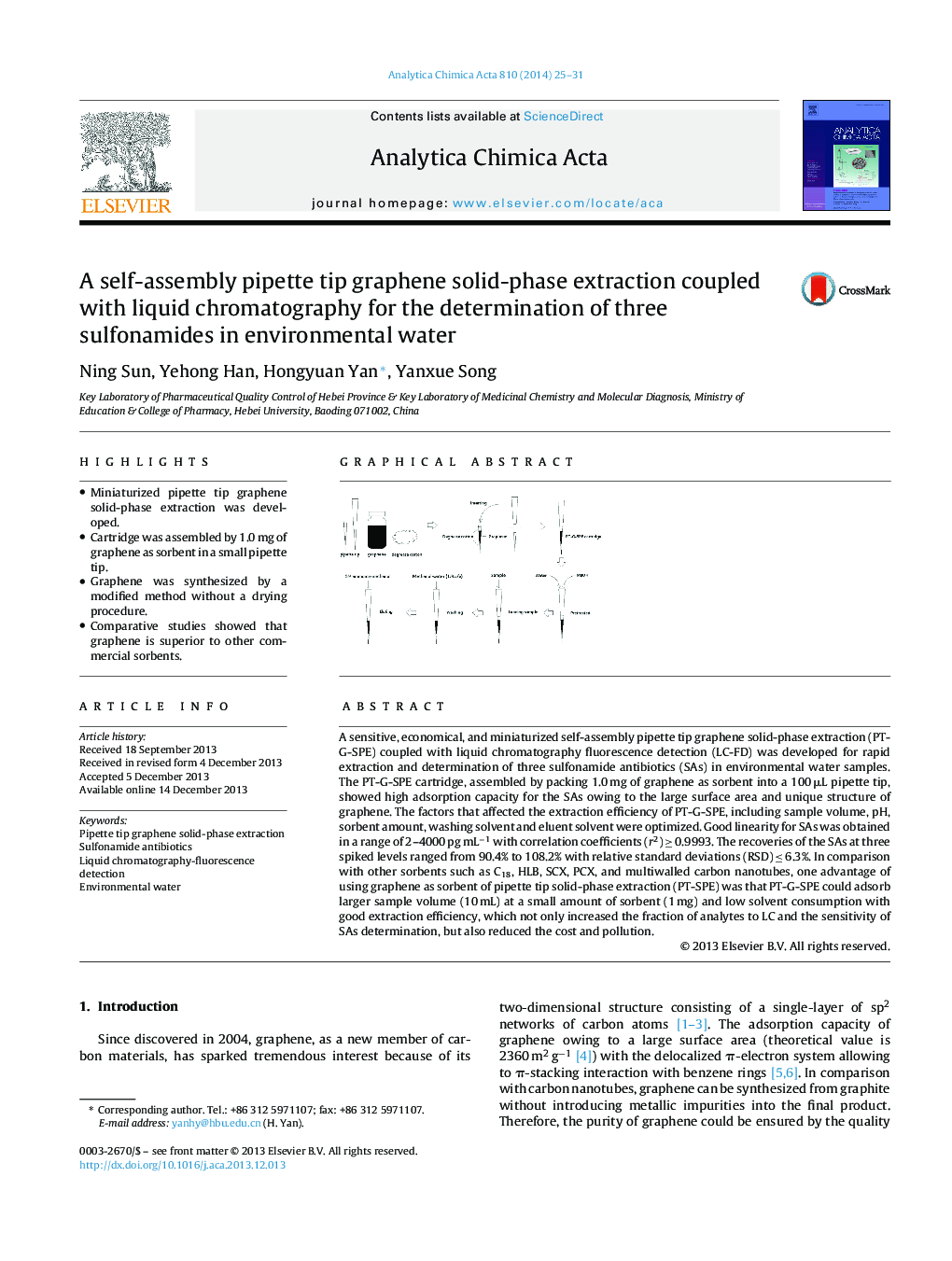| Article ID | Journal | Published Year | Pages | File Type |
|---|---|---|---|---|
| 1164226 | Analytica Chimica Acta | 2014 | 7 Pages |
•Miniaturized pipette tip graphene solid-phase extraction was developed.•Cartridge was assembled by 1.0 mg of graphene as sorbent in a small pipette tip.•Graphene was synthesized by a modified method without a drying procedure.•Comparative studies showed that graphene is superior to other commercial sorbents.
A sensitive, economical, and miniaturized self-assembly pipette tip graphene solid-phase extraction (PT-G-SPE) coupled with liquid chromatography fluorescence detection (LC-FD) was developed for rapid extraction and determination of three sulfonamide antibiotics (SAs) in environmental water samples. The PT-G-SPE cartridge, assembled by packing 1.0 mg of graphene as sorbent into a 100 μL pipette tip, showed high adsorption capacity for the SAs owing to the large surface area and unique structure of graphene. The factors that affected the extraction efficiency of PT-G-SPE, including sample volume, pH, sorbent amount, washing solvent and eluent solvent were optimized. Good linearity for SAs was obtained in a range of 2–4000 pg mL−1 with correlation coefficients (r2) ≥ 0.9993. The recoveries of the SAs at three spiked levels ranged from 90.4% to 108.2% with relative standard deviations (RSD) ≤ 6.3%. In comparison with other sorbents such as C18, HLB, SCX, PCX, and multiwalled carbon nanotubes, one advantage of using graphene as sorbent of pipette tip solid-phase extraction (PT-SPE) was that PT-G-SPE could adsorb larger sample volume (10 mL) at a small amount of sorbent (1 mg) and low solvent consumption with good extraction efficiency, which not only increased the fraction of analytes to LC and the sensitivity of SAs determination, but also reduced the cost and pollution.
Graphical abstractFigure optionsDownload full-size imageDownload as PowerPoint slide
